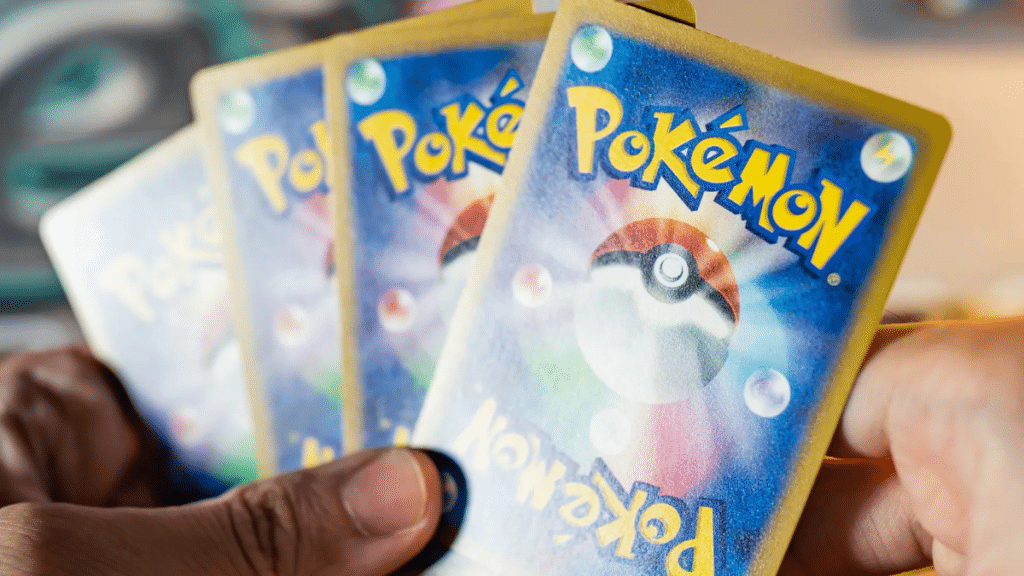Pokémon cards have recently experienced a renaissance in popularity, gathering collectors, players, investors, and the rest of us. Something that was essentially a retro kid craze a few years back has become a very lucrative industry, with rare cards selling for thousands—albeit sometimes millions—of dollars. Why are Pokémon cards packs all the rage now, though? Let’s examine the reasons for this contemporary Pokémon card craze.
1. Nostalgia and the Power of Millennials
Nostalgia is perhaps the most significant motivator of the comeback of Pokémon cards. Millennials, born in the late 1990s and early 2000s, now have the financial ability to support their childhood hobby. They are trading for Pokémon cards, trying to complete collections or recapturing the thrill of opening a rare holographic Charizard. The nostalgic link people have with Pokémon forces them to spend time and money pursuing the hobby again.
2. The Emergence of Social Media and Influencers
Social media sites like YouTube, TikTok, and Instagram have been great helpers in increasing the popularity of Pokémon cards. Influencers and content creators post pack-opening videos daily, showing reactions to their pulls of rare cards. A-listers such as Logan Paul have brought the Pokémon card subculture mainstream popularity by spending millions on rare items, once more propelling the hobby’s interest to a mass market. That visibility has spurred renewed interest from current fans and new ones.
3. The Hunt
Opening a new pack of Pokémon cards is an indisputably thrilling experience. The surprise factor—risking the possibility of getting a rare or high-value card—brings collectors back repeatedly. This surprise and mystery factor is the same as opening loot boxes in a game, so it is a compelling activity for a gaming generation familiar with interactive and digital entertainment.
4. Competitive Play Boom
The Pokémon Trading Card Game (TCG) has been highly competitive, and its organised play events and tournaments continued to increase in popularity. The pandemic was a significant catalyst for the growth of online play, which enabled more individuals to play the game from home. More competitive play means more demand for strong and restricted cards, further enhancing their value.
5. Investment Opportunities
Aside from play and nostalgia, Pokémon cards have become a viable investment. Rare cards have gained value over time and are collectors’ and investors’ favourites. Vintage and first-edition cards are now treasures, fetching six or seven figures on auction. Even recent releases are valuable, particularly misprinted or limited-release cards.
6. The Pandemic Effect
The COVID-19 pandemic had much to do with the Pokémon card boom. More time at home meant that for many, trading cards and collecting became their new hobby. Lockdowns also raised online shopping, with Pokémon card buys on platforms like eBay going through the roof. Lastly, the stimulus checks provided some additional cash on the side to spend, leading to many picking up on their childhood interests.
7. Low Supply and High Demand
When demand for Pokémon cards increased, supply could not match. Resellers and scalpers exploited the boom, buying entire boxes from stores again and again and reselling them at outrageous rates. The unavailability of some sets did nothing to dampen desire, with collectors shelling out top prices for packets and individual cards. The rarity factor has made discovering rare cards challenging and gratifying.
8. New Sets and Inventions
Pokémon regularly brings out fresh and new sets that keep the game young and fascinating. Special set releases, crossovers, and distinct card aesthetics (alternate and holographic art) attract collectors and competitive players. Adding new mechanics, such as VMAX and Radiant cards, keeps the game young and engaging.
9. The Pokémon Phenomenon
Pokémon has never not been a pop culture behemoth, and ongoing success with games, films, and merchandise maintains the TCG’s popularity. Releases of new Pokémon video games like Pokémon Legends: Arceus and Pokémon Scarlet and Violet keep the franchise in consumers’ minds and, by extension, keep the trading card game in consumers’ interest also. The interdependence of various franchise elements makes Pokémon cards a mainstream pop culture staple.
Conclusion
The Pokémon card and one-piece TCG sets craze is fueled by nostalgia, social networking, competitive play, investment, and scarcity. As long as Pokémon continues to evolve and attract its fans globally, the trading card game will be a sought-after and engaging hobby. Whether you are an avid collector, competitive player, or new enthusiast who wants to become part of the world of Pokémon cards, now is the ideal time to join in.
